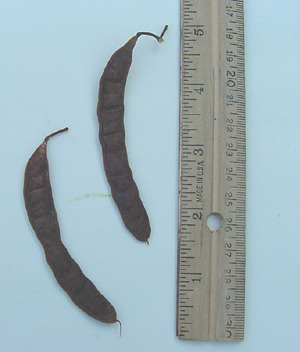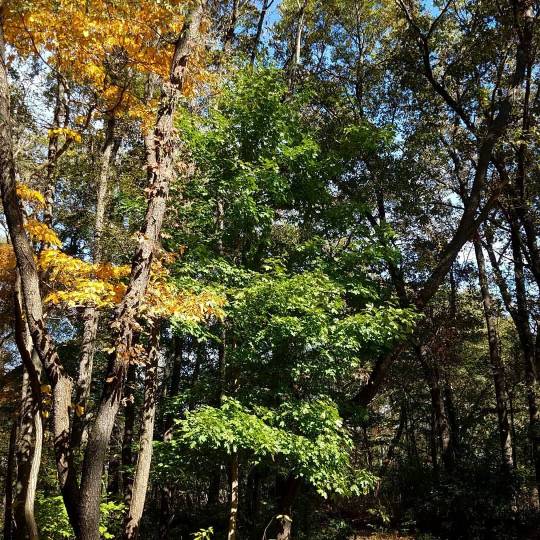Text
I expected to see a swamp monster rise out of the lagoon

3 notes
·
View notes
Text
False spring is my favorite day in February. After a deep snow, 14", all the snow melted with a 54⁰ day. But before it got really warm, the snow melted and gave us a beautiful misty morning
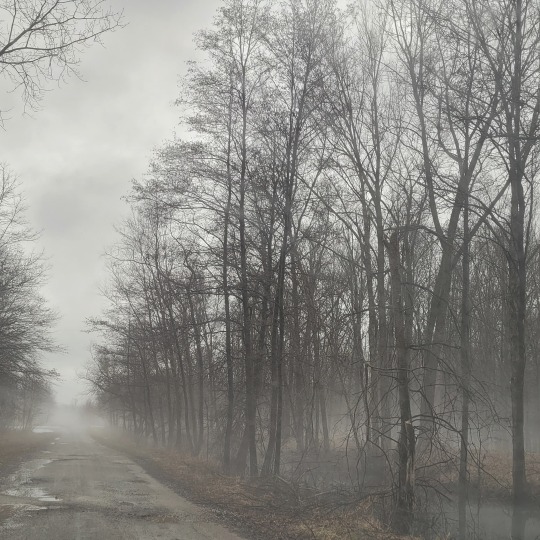
1 note
·
View note
Text

Squirrel nest high in tree and close to the center. Cold winter with high snow. We'll see.
3 notes
·
View notes
Text
After the last rain, before the first frost we found so many mushrooms up on the top of the mountain.
#mushrooms #naturephotography #kankakeecounty #nature #redtakesahike
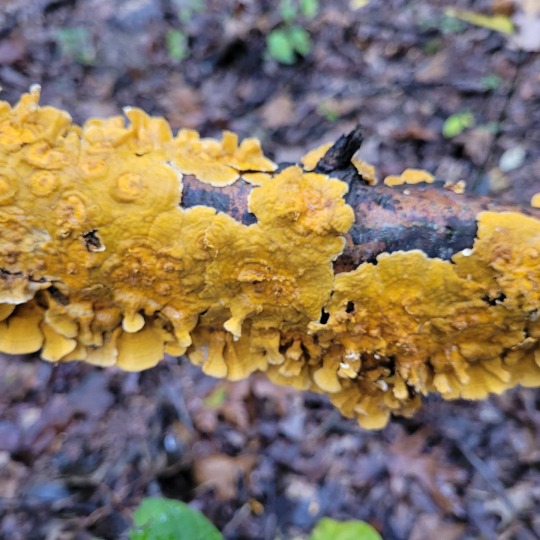

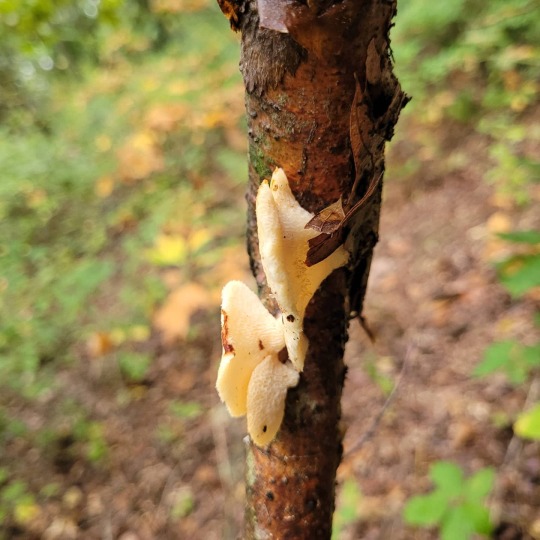


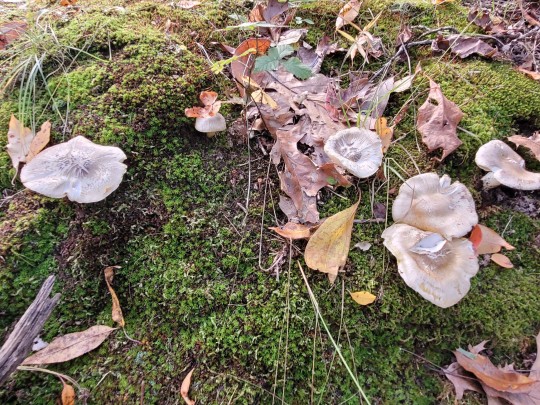
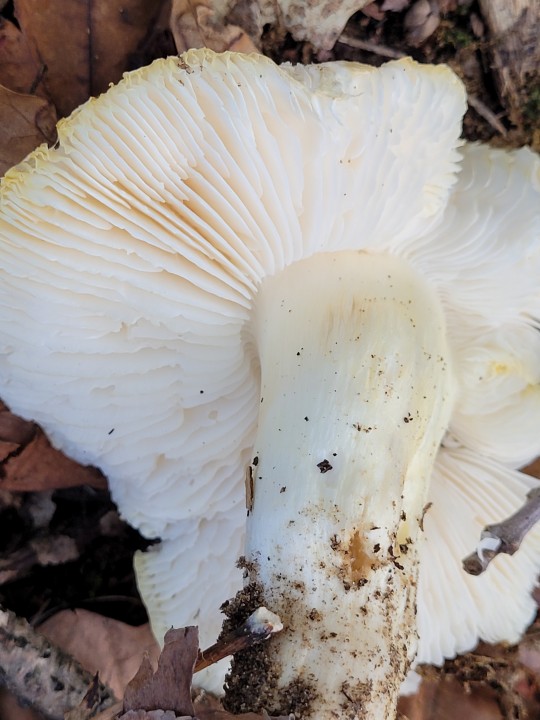
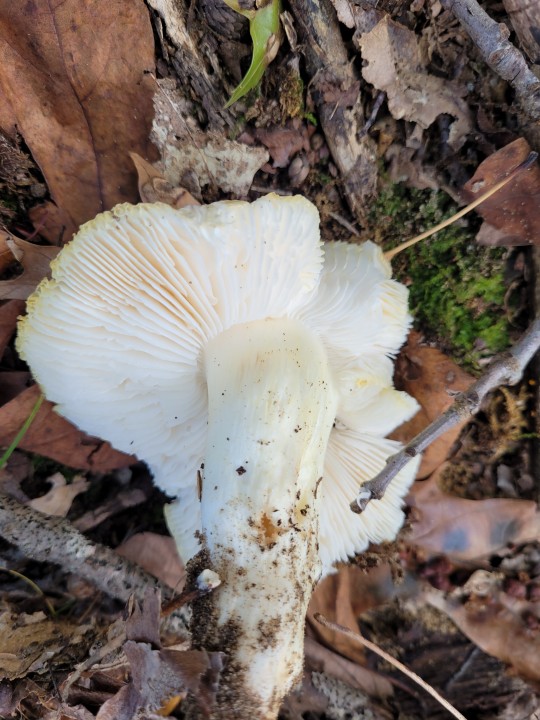
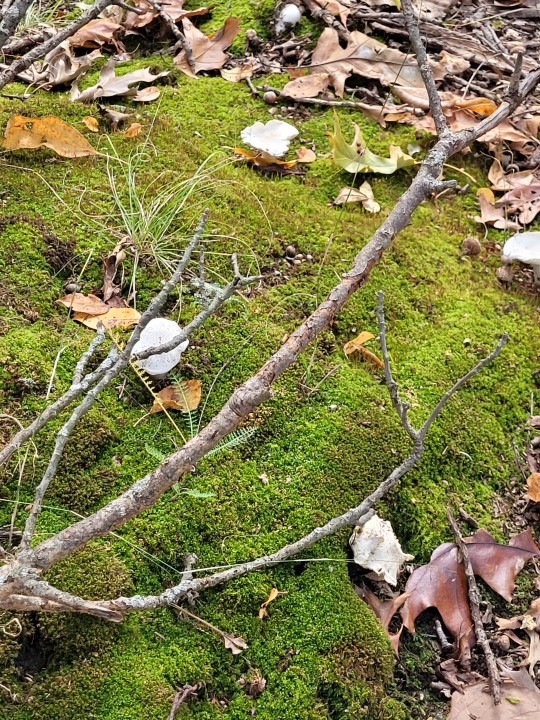
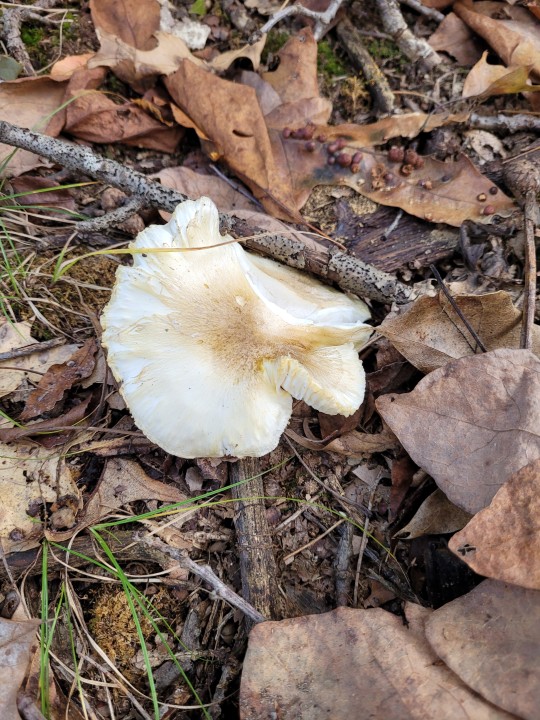
0 notes
Text
We've been studying Grasses, Reeds & Sedges
After a short discussion on the differences between each, we went out looking for examples of each.
The key difference between grasses and sedges is that grasses are in the family Poaceae. They have a hollow cylindrical stem and alternately arranged leaves while sedge is a member of family Cyperaceae and has a solid triangular stem and spirally arranged leaves.
Sedge stems are solid, and unlike grasses, they don't have nodes or joints. Sedge stems are triangular in cross-section, three sided, especially towards the base of the stem. In general they are tough.
Reeds, as we learned last month, have hollow stems and grow in clumps. They're most often found near water.

1 note
·
View note
Text

Life is pretty good for Tango. He came to us through a rescue from TX. He was looking pretty poor there and we really had no idea what to expect.
He's Malinois through and through. He's enjoying the good life now.
#malinois #rescue #dogwork #mymalpal #biteme #crousecanine #tangofanago
1 note
·
View note
Photo
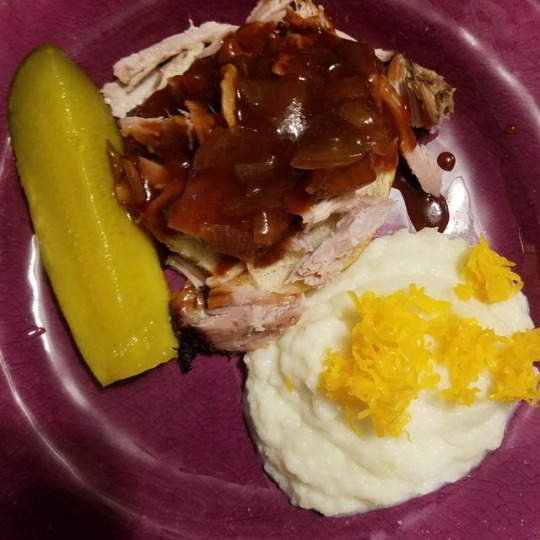
Smoked Pork Butt, Cauliflower Puree and Homemade Sugar-free BBQ Sauce 2 1/2 6-oz cans Tomato paste 1/2 cup Apple cider vinegar 1/3 cup Sweetener of choice, preferably either powdered or liquid 2 tbsp Worcestershire sauce 1 tbsp Liquid hickory smoke 2 tsp Smoked paprika 1 tsp Garlic powder 1/2 tsp Onion powder 1/2 tsp salt 1/4 tsp Chili powder 1/4 tsp Cayenne pepper 1 1/2 cup Water Whisk all ingredients together in a saucepan, adding the water last. Start with a cup of water, then whisk in a bit more at a time, until it reaches a consistency slightly thinner than barbecue sauce. Bring to a gentle boil at medium-high heat, then reduce to medium-low. Simmer, uncovered, stirring frequently, for 20 minutes, or until slightly thickened. Taste and adjust sweetener or cayenne pepper if you prefer the sauce to be sweeter or spicier. If it's still thicker than you like, you can stir in additional water, a tablespoon at a time, until reaching desired consistency.
1 note
·
View note
Photo

Salisbury Steak and Cauliflower Puree Salisbury Steaks 2 lbs ground chuck 3/4 cup almond flour 1 Tbsp fresh parsley, chopped 1/4 cup beef broth 1 Tbsp Worcestershire sauce 1/2 tsp garlic powder 1 Tbsp dried onion flakes 1 1/2 tsp kosher salt 1/2 tsp ground black pepper The Gravy 2 Tbsp butter 2 Tbsp butter 2 cups sliced mushrooms 1 cup sliced yellow onions 1/2 tsp Worcestershire sauce 1/2 cup beef broth 1/4 cup sour cream salt and pepper to taste Salisbury Steaks Combine all of the steak ingredients in a medium sized bowl and mix well.Form into 6 oval patties, about 1 inch thick, and place them on a cookie sheet.Bake in a preheated 375 degree oven for 18 minutes. The Gravy Melt the butter in a large skillet.Add the mushrooms and cook until golden brown. Add the onions and cook for five minutes over medium heat. Add the broth and the Worcestershire sauce, stir and cook for 2 minutes, stirring to scrape any bits off of the bottom of the pan. Add the sour cream, stir well, and remove from the heat. Season with salt and pepper to taste. Serve over the warm Salisbury Steaks with extra parsley for garnish if desired. Cauliflower Puree 5 cups cauliflower chopped 4 tbsp Heavy Whipping Cream 3 tbsp Butter 5 cloves garlic minced 2 tsp rosemary 3 tbsp parmesan 1/2 tsp pepper salt Chop up 5 cups of raw cauliflower. Bring pot of water to a boil, add the cauliflower and boil for 15 minutes or until tender. Drain cauliflower and place in processor. Cook butter, garlic and rosemary in a saucepan over medium heat until fragrant. Add melted butter, garlic and rosemary to processor and pulse several times until well combined. Add cream, parmesan, salt and pepper to processor and process until smooth and creamy
2 notes
·
View notes
Photo

Campfire Breadsticks
2 cups flour
1 Tbsp. baking powder
¼ tsp. salt
¾ cup milk
¼ cup canola oil
Combine flour, baking powder, and salt in a ziplock baggie ahead of time. When you get to camp, add milk and canola oil and stir until the mixture becomes doughy. Pull the dough into long, fat “snakes” and wrap them around clean sticks–or hot dogs on sticks–and cook over the coals until golden.
37 notes
·
View notes
Photo
next camping trip
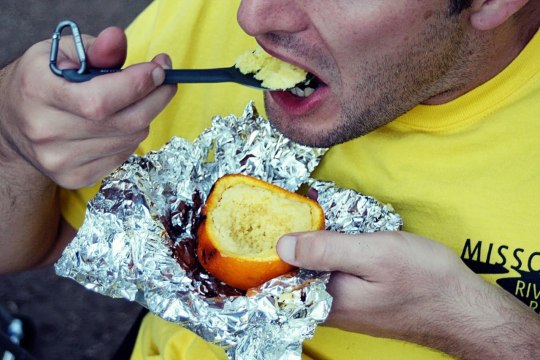
Orange Shell Cake
Ingredients
1 box Yellow Cake Mix
6 Large Oranges
Slice the tops off the oranges, and eat the pulp out while keeping the skin intact. Add water to cake mix as per instructions on box and fill the oranges about 2/3rds of the way with the batter. Replace the tops, ball the whole thing up in tin foil, and stick it directly in the coals, rolling occasionally, for 15-20 minutes.
25 notes
·
View notes
Text
Dealing with Poison Ivy
Poison ivy grows all over North America including Ontario. So it is best to know a little about this plant so you can easily avoid contact when hiking.
1. Poison ivy looks like?
Poison ivy is a hearty plant that can be found thriving in tall grass, along roadsides, in the woods and I have even found it growing in campgrounds. The plant has three pointed leaves that are smooth with the center being slightly longer than the two on the sides. The leaves do change color throughout the year being a reddish-yellow colour in the spring turning green during the summer months and then red, orange or yellow in the fall. Also the small greenish flower in bunches along with clusters of small white berries which develop in late in the season.
2. Can there be any benefits of poison ivy?
Actually there are, but not for you or I. Many small animals and birds use poison ivy as a food source eating the berries and they are not impacted by the oil.
3. What makes poison ivy, well poisonous?
Poison ivy contains urushiol oil which in a matter of minutes or a few hours can penetrate deeply and quickly into your skin. For about 85 percent of us our immune system then reacts to the poison urushiol oil as it is seeping into our skin and leads to unpleasant that blistering, itching and a rash.
Later a red inflammation of tiny bumps and blisters with a clear fluid ooze forms. This fluid from the blisters can even cause the rash to spread so never break open the blisters. It takes from a few days to five weeks for the itching rash to go away by itself if left untreated although everyone reacts differently.
Urushiol oil is very tenacious and it is not water based so it does not evaporate. The oil can contaminate and stick to items such as your hiking clothes, boots and gear for over a year. It is therefore possible to become infected long after your original hike. The oil can also stick to your dog as well.
4. Treatments if your catch poison ivy
As with any medical condition it is always a good idea to see a medical professional immediately if in doubt as to how you should procedure. If you experience blistering or your eyes swell shut do consult a doctor. As mentioned earlier people do react differently to the poison.
There are both home remedies and over the counter products are also available from your drug store for treatment. Whatever method you choose, react quickly before the poison ivy spreads.
· Begin by immediately washing the affected area in warm water and rubbing alcohol on the rash and immediate area. This is to help the dry out the rash
· Then immediately take a full body shower using soap. Do not a take bath as it will not help get rid of the oil. Some people recommend dish soap as it is made to cut grease.
· Suggestions to help with the itching include using white vinegar, hot tap water, baking soda as a paste and calamine lotion.
Have a safe walk and watch out for poison ivy along the hiking trails.
2 notes
·
View notes
Link
🍂🍄🍃
“We’ve all heard of Medicinal Mushrooms, but as herbalists explore deeper into the field of mycology we’re finding the world of fungi has many layers of healing to offer. Today, we’re talking with Peter McCoy, author of Radical Mycology: A Treatise on Seeing and Working with Fungi, about mushroom medicine for body, mind, and soul. Mushrooms We Mentioned: Turkey Tail, Glymeromycota, Shitake, Maitake, Cordyceps, Oyster, Mycelium; Processes We Mentioned: Decocting, Mushroom Tea, Tincturing, Syruping, Drying.”
43 notes
·
View notes
Text
Black vs Honey Locust Trees
So which is which? I remember a couple trees from taxonomy. One is the black locust tree. It botanical name is Robinia pseudoacacia. I remember it because i named a kitten i got the same semester, Robinia. I, honestly didn't remember the honey locust tree’s is Gleditsia triacanthos. The black locust tree is fast growing and larger than the honey locust. The black locust reaches a height of about 50 to 75 feet with a diameter of up to 36". Some older black locust trees have been known to grow to about 150 feet tall. While the black locust tree is a native of the south eastern US, the honey locust tree is native to central eastern region. We can also tell the two trees apart by just looking at the bark. The black locust’s bark is dark in color with grooves that resemble an intertwining rope. The honey locust’s bark is brown or grey in color and the tree, notably, has bunches of thorns. Both the black and honey locust have smooth, thin, shiny seedpods. But if you look at the seedpod, there are minor differences. The black locust’s seedpods grow to a length of two to four inches, whereas the seedpods of the honey locust grow to a length of about 12 to 14 inches and they curl in a spiral shape. The leaves are very different. The black locust has very simple compound leaves where honey locust trees have bipinnate compound leaves. New leaves also come out earlier in the honey locust than the black locust.
0 notes
Text
Preserving Leaf Collections
Did you know that some properly prepared collections have survived for over a century in botanical sections of museums? When selecting leaves for your collection, avoid leaves damaged by insects, disease or the environment. Try to select leaves of about the same size and shape as a majority of the leaves on the tree. Make sure that the complete leaf is collected. Remember, simple leaves have only one blade or leaflet. Compound leaves have several to many leaflets. While collecting, leaf specimens can be protected in the field by placing them between the pages of a magazine or a small notebook. I use my nature journal. All leaves should be removed from this temporary magazine press as soon as possible and placed in a leaf press. You should have identified and noted each leaf name and these names should follow the specimen until it is exhibited. For the years I didn't have a leaf press, I used a phone book and placed it under a piece of plywood and put all of it under something heavy, like the end of the sofa. Allow at least three to five days of "press" time for each leaf depending on its size and moisture content. To preserve the beauty of the collection and add strength to the leaves, a clear plastic or acrylic spray finish may be added to them. To do this: Place leaves flat on a piece of newspaper or 'butcher paper'. Apply the spray in a thin coat to the leaf surface. Allow leaves to dry completely between coats and before handling. Turn leaves over and apply a thin coat of acrylic spray to underside of leaf. Handle sprayed leaves only after they have dried completely. Either mount your entire collection on an exhibit board or place each leaf on a separate sheet of poster board or art paper (all cut to a size which will hold the largest leaf). Prepare the leaf for mounting by applying several drops of clear-drying glue to the back, place the leaf on the mounting surface and place weight on leaf until dry. Add a label to each leaf to finish your collection. Your label should include both the common tree name and the scientific name to each specimen.
0 notes
Photo
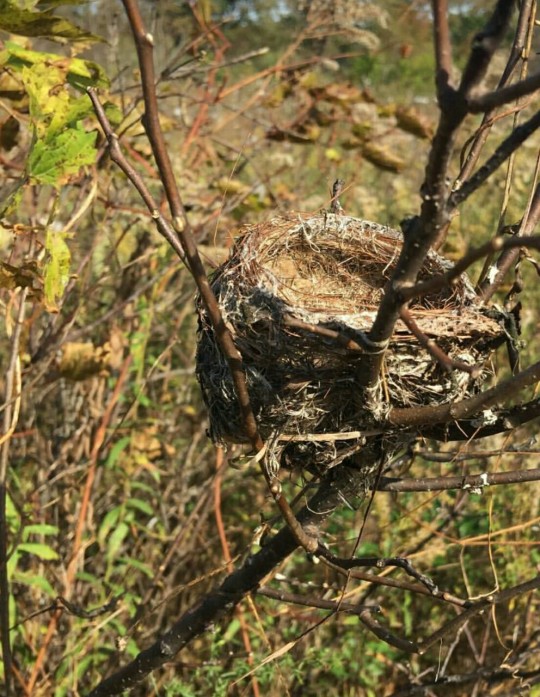
Evans-Judge Preserve When leaves start falling from deciduous trees, bird nests seem to appear out of nowhere. Most songbirds abandon their nest after raising one brood, never to return to it. Empty nests will sit where they are built until the elements break it down or another animal uses the building material for other purposes. Sometimes, if the nest is well protected, a mouse may take it over as a winter home. Just as each species of bird has its own distinctive song, each species also builds a unique nest. It is often possible to determine what species built a nest without ever setting eyes on the bird. The size, shape, material used and habitat in which a nest is built are remarkably similar for all birds of a given species. The combination of our nest’s 3” outer diameter, the fact that it is located 3’ off the ground and that it is made out of small twigs and horsehair, makes me think the builder was a Chestnut-sided Warbler. I've seen, and heard, them in this park.
1 note
·
View note
